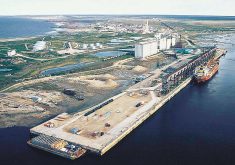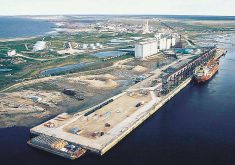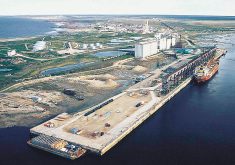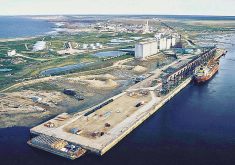New funding has breathed new life into Churchill, but few are holding their breath about a return to the golden years of grain shipping from the northern port.
“This is going to help keep the railway operating, at least for a while,” said Barry Prentice, professor of supply chain management at the University of Manitoba’s Asper School of Business.
The funding announced in early August will be distributed over two years to the Arctic Gateway Group (AGG), the company that owns and operates the Hudson Bay Railway. The funds include a $60 million top up in the federal government’s existing support, as well as $73.8 million from the Manitoba government.
Read Also

Seeding Indigenous agricultural prosperity
National Circle for Indigenous Agriculture and Food says Indigenous agricultural success needs strong relationships.
Prentice said it’s an important step toward attracting new cargo to the port but it’s unlikely that grain exports will reach former levels.
“The trouble is that the grain shippers have their own infrastructure. So, obviously, they don’t want to send anything to anybody else’s terminal. That means less money for them,” Prentice said.
In recent history, the high-water mark for grain shipments through Churchill was reached in 2006, when the port saw 621,000 tonnes move through its terminal. The port’s viability at that time depended almost completely on grain from the Canadian Wheat Board (CWB), and wheat accounted for 90 per cent of the traffic through the port.
But with the demise of the CWB’s single-desk selling authority in 2012, volumes began to plummet until operations ceased in 2015. In 2019, amid much fanfare, grain shipments resumed, only to be put on hiatus again in 2021.

Although there were oblique references to global food security and the war in Ukraine, grain exports were not directly mentioned in the funding announcement or during speeches at the corresponding press conference. The messaging indicated new funding is more about servicing northern communities than about re-establishing grain traffic through the port.
Prentice said that isn’t surprising.
“When the rail line went out, Churchill reverted to being a remote community, and the price of food tripled,” he said. “People started leaving and opportunities disappeared. And that’s a function of just not having a transportation connection.”
Elden Boon, a Virden-area grain farmer and president of the Hudson Bay Route Association, an advocacy group that promotes use of the railway and the port for agriculture shipping, says he’s optimistic about the future of grain transport through Churchill.
“The terminal is in very good condition. Grain is still a big option to be put through there, but they need to restrict the traffic to a certain extent to be able to do the work that they need to do. So that’s one of the reasons they’re not looking at grain yet,” he said.
For Boon, that future includes diversification so commodities other than grain are shipped. He speculates that products from the mining and energy sectors could be options for the port.
He acknowledged that the first step is to upgrade the line to Churchill, and the new funding will be used for that.
“We’ve just never been able to quite get over that first step. So, in our opinion, the future looks pretty bright now,” said Boon.
Prentice is less bullish. He said he did a back-of-the-envelope calculation a few years ago based on the averages from the Canadian Railway Association rail traffic and what it costs to maintain rail lines.
“By my calculations, that railway needs to generate about two million tonnes of traffic per year to become self-sustaining,” he said. Based on those numbers and the peak reached in 2006, Prentice said it’s likely the railway has never been self-sustaining.
He agreed with Boon that there may be opportunities to ship cargo from other industries, which could help make up the shortfall. But there are other issues, and one of them is climate change.
“Climate change is good and bad for Churchill,” Prentice said. “The good side is it could lead to a longer shipping season. But the downside is that that last stretch from Gillam to the north is becoming more active as the permafrost melts. So, I guess I would say simply, the future of the rail line is not secure yet.”
But Prentice said he is hopeful that solutions will be found.
“The last thing I want to do is come across as really negative,” he said. “I think there is an opportunity for Churchill, and I hope that technology can be found to make sure that we can cope with climate change on that stretch of the line.”
There are some radical options that might secure a long-term future for the port. The first is to move the track further west.
“Now, I’m sure that’s a billion-dollar touch to do that but that would be an option,” he said. The other option he mentions is truncating the line at Gillam and turning the rail bed between Gillam and Churchill into a road bed to accommodate trucks. That would make the route easier to maintain, largely because trucks are lighter than rail cars.
“What I would say is not in the works, is giving up on Churchill,” Prentice said.
















